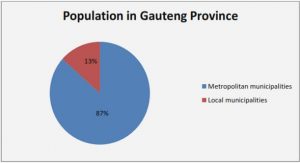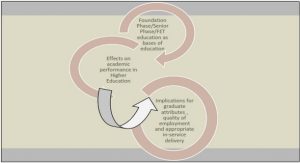Get Complete Project Material File(s) Now! »
CHAPTER 2 THEORETICAL FOUNDATION REVIEW OF RELATED LITERATURE
INTRODUCTION
This chapter provides the theoretical foundation of the study and the literature review on issues related to factors perpetuating the persistence of FGM practice, despite the growing awareness of its dangers on the girl child’s formal education, particularly at the basic level. This study is based on William Ogburn’s (1964:86-95) “Cultural Lag Theory”. He coined the term cultural lag in his 1922 work Social change with respect to culture and original nature.Ogburn’s definition of cultural lag is: “A cultural lag occurs when one or two parts of a culture which are correlated changes before or in greater degree than the other part does, thereby causing less adjustment between the two parts that existed previously” (Ogburn 1957:167). This theory of cultural lag suggests that a period of maladjustment occurs when the non-material culture is struggling to adapt to new material conditions. Although these are the premises of the theory, the researcher will also investigate the phenomenon that interconnected elements within the adaptive non-material culture (FGM beliefs and education) do not change and adjust evenly, thereby causing maladjustment in the nonmaterial culture itself and not only maladjustment to the material culture of the Kuria community. The researcher hopes to prove that this extension to the existing theory of cultural lag will make a theoretical contribution to the study.Research is conducted on FGM as a traditional practice and belief system that is intended for cultural identity and graduation of a girl into womanhood or adulthood in preparation for marriage in the Kuria community. This view is explored more profoundly through a review of literature in the related field. The general purpose of this literature review is to identify possible factors enhancing the persistence of FGM practice in spite of its dangers on the girls and consequently how it affects their education and empowerment.
THEORETICAL FOUNDATION OF THE STUDY
William Ogburn (1957, 1964), the proponent of the theory argues that within society as a whole, a change takes place in the material culture and that adaptive non-material culture (belief systems and institutional practices) changes extremely slowly in spite of changes elsewhere. The term cultural lag refers to the notion that culture takes time to catch up with technological innovations, different rates of changes in material and non-material parts of culture account for this lag and that social problems and conflicts are caused by this lag. In this sense, Ogburn (1957) conceptualizes cultural lag as the failure of ideas, attitudes, and aspects of institutional practices to keep pace with changes in the material culture. When the material conditions change, changes are occasioned in the adaptive culture, but these changes in the adaptive culture do not synchronize exactly with the change in the material culture, this delay is the cultural lag. This resonates with ideas of technological determinism, in that it presupposes that technology has independent effects on society at large. Later Ogburn (1957) used the term to indicate a more mechanical model that likened society to machinery that ran either well or poorly depending on the state of the various “parts”. The origin of the theory of cultural lag can be found in Ogburn’s emphasis on social change and the factors that cause it. The period required for society to adapt to the increased speed capability of the automobile was Ogburn’s (1957) classical description of technologically driven cultural lag. He described societies in which changes are occurring rapidly and contrasts this to societies in which change is occurring slowly (Ogburn 1957),like in the case of the Kuria community.
CHAPTER 1: INTRODUCTION AND ORIENTATION
1.1 Background to the problem
1.2 Statement of research problem
1.3 Research questions and basic hypotheses
1.4 Objectives of the study
1.5 Justification and Significance of the study
1.6 Scope and Limitation of the study
1.7 Assumptions of the study
1.8 Theoretical framework
1.9 Research procedure and techniques
1.10 Conceptualization of terms
1.11 The presentation of the study
CHAPTER 2: THEORETICAL FOUNDATION REVIEW OF RELATED LITERATURE
2.1 Introduction
2.2 Theoretical foundations of the study
2.3 Brief historical Background to Female Circumcision
2.4 Definition and classification of FGM
2.5 Practice and prevalence of FGM in Kenya
2.5.1 Types of circumcision performed
2.5.2 Reasons for practicing FGM
2.6 Effects of FGM on the Girl-Child
2.6.1 Health effects of Female Circumcision
2.6.2 Economic effects of FGM
2.6.3 Social effects of FGM
2.7 Conclusion
CHAPTER 3: CHANGING TRENDS OF FEMALE CIRCUMCISION IN KENYA
3.1 Introduction
3.2 FGM culture and gender
3.3 Female circumcision and religion
3.4 Female circumcision and marriage
3.5 Changing trends of FGM in Kenya
3.6 Attempts to eradicate FGM in Kenya
3.7 Current campaigns on FGM eradication
3.8 Attempts to improve the life of the girl child after circumcision
3.9 Conclusion
CHAPTER 4: RESEARCH METHODOLOGY
4.1 Introduction
4.2 Design of the study
4.3 Targeted population and sample selection
4.4 Sample design and sample size
4.5 Units of analysis
4.6 Study locality
4.6.1 Kuria district administrative boundaries
4.7 Data collection instruments
4.8 Data collection procedure
4.9 Piloting of the study
4.10 Conclusion
CHAPTER 5: DATA ANALYSIS AND RESEARCH FINDINGS
5.1 Introduction
5.2 Data analysis
5.3 Research findings
5.3.1 Factors enhancing persistence of FGM
5.3.2 Role of culture in persistence of FGM
5.3.3 Role of community’s attitude in FGM
5.3.4 Role of school/education in eradication of FGM
5.3.5 Role of church in eradication of FGM
5.3.6 Alternative rite of passage in Kuria district
5.3.7 Discrepancies between educated males and females
5.3.8 Impact of discrepancies on development of area
5.3.9 Barriers facing the girl child in ascending to leadership
positions as a result of FGM
5.3.10 Reasons for persistence of FGM
5.4 Conclusion
CHAPTER 6:
6.1 Introduction
6.2 Discussions and findings
6.3 Data Conclusions
6.4 Policy implications
6.5 Recommendations
6.6 Areas for further research
LIST OF REFERENCES
List of other sources
Appendixes/Annexure






